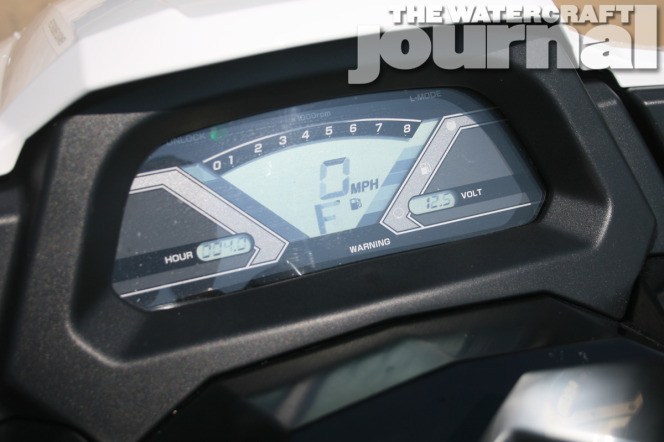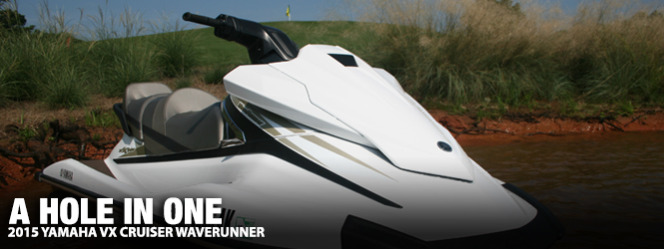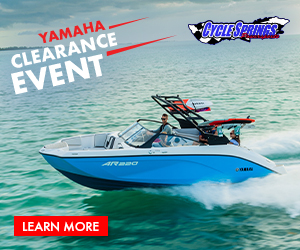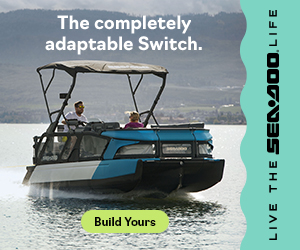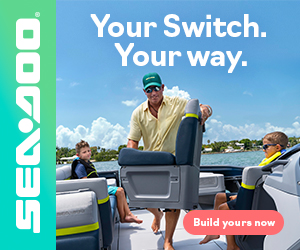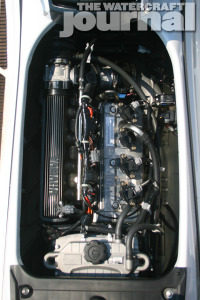 Starting with a blank sheet and decades of proven modeling experience and techniques, Yamaha sought to completely redesign its bread-and-butter VX Series. The difficulty in doing so meant jeopardizing its position as the single highest-selling personal watercraft ever. The gamble was hedged on the fact that enthusiasts were gravitating towards other models (either within the Yamaha WaveRunner lineup or to other brands) for a greater variety of riding characteristics, advanced technology options and creature comforts.
Starting with a blank sheet and decades of proven modeling experience and techniques, Yamaha sought to completely redesign its bread-and-butter VX Series. The difficulty in doing so meant jeopardizing its position as the single highest-selling personal watercraft ever. The gamble was hedged on the fact that enthusiasts were gravitating towards other models (either within the Yamaha WaveRunner lineup or to other brands) for a greater variety of riding characteristics, advanced technology options and creature comforts.
Drawing much from its larger siblings, the redesigned VX lineup features new sharp, masculine lines that compliment the longer (by 131.5-inches) and wider (48-inches) hull. This increased platform only bumps the overall weight to 730 pounds (dry), still well below comparable units thanks to Yamaha’s featherweight NanoXcel material, but radically alters the way the outgoing VX hull handled.
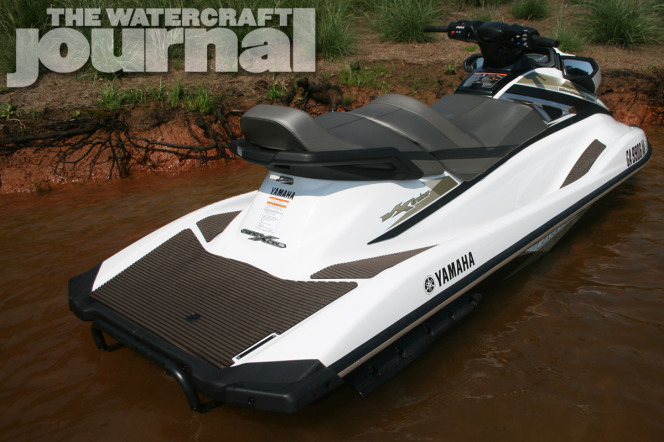
Although still retaining a little bit of its looseness in the tail, the new VX is significantly more responsive to both the new fly-by-wire throttle and steering. A new rounder keel, modified strakes and softer chines, coupled with an all-new intake and rideplate help the revised VX to rise to plane faster and slice through chop far more deftly than ever before. At throttle, long sweeping turns are smooth and solid. For shorter, snappier handling, the VX is still very playful and can whip its tail around with a goose of the throttle and a snap of the bars.
Escalating through the whole VX lineup is Yamaha’s 1,052cc four cylinder, 4-stroke Yamaha Marine engine, that is until reaching the VXS and race-ready VXR (that receives Yamaha’s grunting 1.8L High Output engine). Beneath the widened swim platform is a 155mm pump. Running happily on the “cheap stuff” 87 octane all day, the fully-equipped 2015 Yamaha VX Cruiser WaveRunner we tested hardly dented its 18.5 gallon tank even over the over two days we had to familiarize ourselves with the new machine.
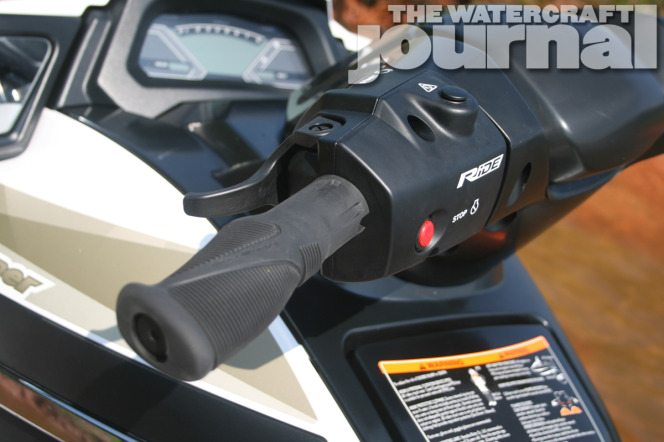
In that time we found the new VX Cruiser pleasantly deceptive; it’s less of a swollen VX but a slightly shrunken FX Cruiser. And its not hard to imagine that was Yamaha’s plan all along. Not only taking from the FX’s aesthetic design, the new VX Cruiser is also lushly equipped for what the company still refers to as their “Versatility” models. Swathed in Yamaha’s popular Pure White hue with gold and chrome accents and two-tone Hydro-Turf coffee-and-black traction mats, the Cruiser also comes in Yacht Blue Metallic if so desired.
Storage (like everything else) is bigger too, with 24.6 gallons total including a wrist-deep glove box and a screw-top watertight storage bin tucked beneath the rear passenger, yet another feature previously only found on the FX and FZ series. Yamaha also split the previous one-piece seat into two, making accessing the rear cubby all that much easier. The hood opens and snaps into place, revealing a shallow but wide bow stowage. The aforementioned two-piece Cruiser bench is comfortable, broad at the seat and narrow at the knees.
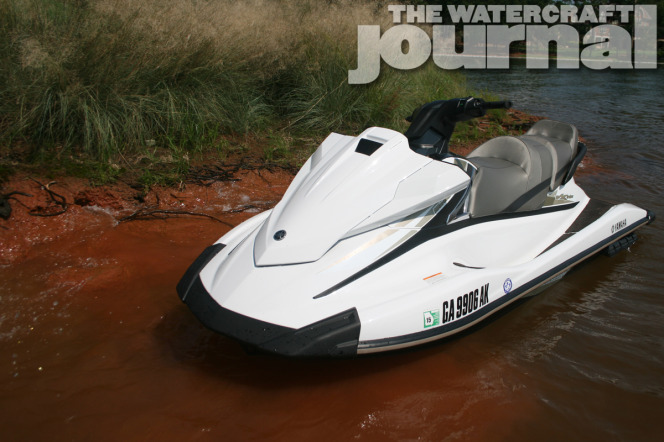
Obviously, the biggest addition to the VX and the whole Yamaha lineup is the addition of the brand’s new RiDE dual-throttle control system. Unlike Sea-Doo’s iBR, which employs the left trigger as a sort of gear lever, having the driver toggle through reverse bucket positions, the RiDE system is literally a throttle unto itself. Without ever touching the right-hand throttle, a driver can back off of a trailer, spin around and pull alongside a dock using strictly the left-hand RiDE throttle.
Thankfully, Yamaha engineers have balanced the RiDE’s traction-controlled thrust to respond in respect to each vehicle’s weight and power output, meaning the engine’s ECU and BCU will not respond as abruptly as it might with a SVHO-equipped FX Cruiser on a VX Deluxe, and vice versa. Of course, if initiated simultaneously, the left-hand will bring the WaveRunner to a halt by deploying the dual-exit bucket and eventually engage reverse if held down. But, if only gingerly deployed, the reverse bucket can gradually decline, acting more as a buffer than a brake.
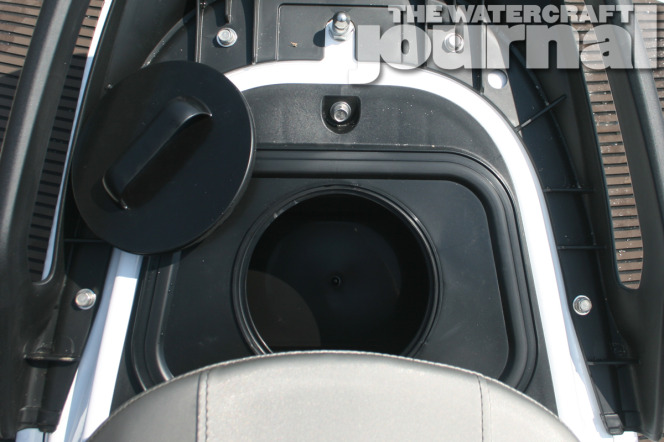
Of course, the other side of the Cruiser coin is the inclusion of Yamaha’s simple-to-navigate Cruiser Assist and No Wake modes. Toggling through speeds is a simple enough task, and although a little slow to respond to initial inputs, setting the cruise control on the fly is easy enough. The new LCD screen is wide and easy to read at speed. And don’t forget the wide and contoured folding swimstep that folds flush to the bond rail.
Par for the course, the VX Cruiser is comfortable, economical and fully-equipped, rightfully earning its place at the top of Yamaha’s Versatility lineup. Priced at $10,299, the VX Cruiser is a marked increase from the outgoing model, but arguably, you’re getting much more machine in exchange for the slight bump in price tag.
